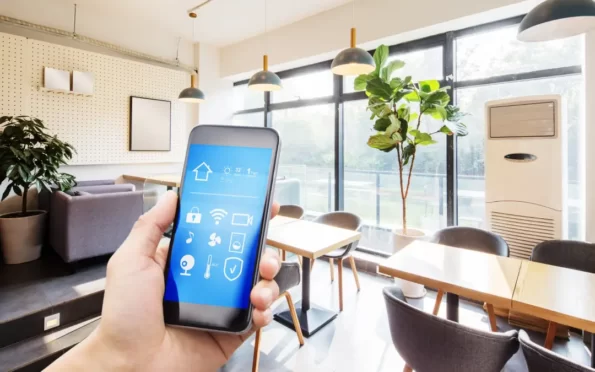In an era where technology seamlessly integrates into every aspect of our lives, the concept of a smart home has emerged as a transformative force. But what is a smart home? Essentially, it refers to a dwelling equipped with Internet of Things (IoT) devices that enable homeowners to control and monitor various aspects of their home environment remotely. With the rise of smart technology, homeowners and businesses alike are exploring ways to enhance convenience, security, and efficiency in their living spaces.
The primary allure of a smart home lies in its ability to connect different devices and systems, allowing them to communicate and work together. Imagine controlling your lighting, thermostat, security cameras, and even kitchen appliances from a single device or voice command. This seamless integration not only makes daily tasks more manageable but also enhances the overall quality of life.

The Evolution of Smart Homes
The idea of a smart home is not entirely new. The journey began decades ago with the introduction of home automation systems designed to control lighting and climate. However, the true revolution in smart home technology began with the advent of the internet and wireless communication. Today, smart homes incorporate cutting-edge technologies like artificial intelligence and machine learning, enabling systems to learn from user behavior and adapt accordingly.
Components of a Smart Home
A comprehensive smart home setup encompasses a wide range of devices and systems:
- Smart Lighting: These systems allow homeowners to control the brightness, color, and scheduling of lights through smartphone apps or voice commands.
- Smart Security: Advanced security systems include cameras, motion detectors, and smart locks, providing real-time alerts and remote monitoring capabilities. For more details on smart home security, refer to our security tips.
- Smart Thermostats: These devices optimize energy consumption by learning user preferences and adjusting temperatures accordingly.
- Smart Appliances: From refrigerators that notify you when groceries are running low to ovens that can be preheated remotely, smart appliances are revolutionizing kitchen management.
- Smart Entertainment: Homeowners can enjoy seamless streaming and control of audio and video systems throughout the house.
Benefits of a Smart Home
Embracing smart home technology offers numerous advantages:
1. Enhanced Security
Smart security systems provide homeowners with peace of mind by enabling real-time monitoring and alerts. With features like remote access and motion detection, homes are better protected against intruders and emergencies.
2. Energy Efficiency
Smart thermostats and lighting systems contribute to significant energy savings by optimizing usage patterns and reducing wastage. This not only lowers utility bills but also promotes environmental sustainability. To learn more about the benefits, explore our benefits of smart homes.
3. Convenience and Comfort
Smart home devices simplify daily tasks, offering unparalleled convenience. From setting reminders to managing home entertainment, these technologies enhance the overall living experience.
4. Increased Property Value
Incorporating smart technology can significantly increase the value of a property. Prospective buyers are often attracted to homes equipped with modern, efficient systems that promise a higher standard of living.
Challenges and Considerations
While the benefits are compelling, there are certain challenges to consider:
1. Privacy Concerns
With interconnected devices constantly collecting data, privacy is a legitimate concern for smart home users. It's crucial to choose systems with robust security features and understand the data policies of service providers.
2. Cost of Installation
Initial setup costs for smart homes can be high, especially when integrating multiple systems. However, the long-term savings and increased property value often justify the initial investment.
3. Compatibility Issues
Not all smart devices are compatible with each other, which can lead to integration challenges. It's important to research and select devices that are designed to work together seamlessly. For a helpful guide on setting up a smart home, visit this smart home buying guide.
Getting Started with Your Smart Home
Embarking on the smart home journey begins with identifying your needs and priorities. Start small by selecting a few key devices that align with your lifestyle. As you become more comfortable with the technology, you can gradually expand your setup to include additional systems.
For homeowners and businesses looking to make the transition, our DIY smart home setup guide offers valuable insights and step-by-step instructions.

FAQs
What are the essential devices for a smart home?
Essential devices include smart lighting, thermostats, security systems, and entertainment systems. These core components form the foundation of a smart home, offering convenience and efficiency.
How secure are smart home systems?
Smart home systems are generally secure if proper measures are taken. It's important to choose reputable brands, regularly update software, and enable strong authentication methods to protect against potential threats.
Can I retrofit my existing home with smart technology?
Yes, most smart home technologies can be retrofitted into existing homes. Wireless devices are particularly easy to install without requiring major renovations.
In conclusion, a smart home represents the future of living, offering unparalleled convenience, security, and efficiency. As technology continues to evolve, the possibilities for smart homes are endless, promising an exciting journey for homeowners and businesses alike.

